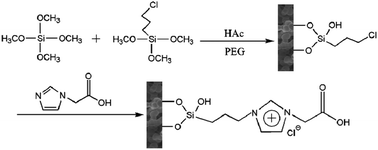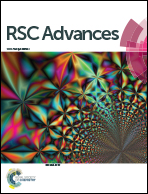A novel imidazolium-based organic–silica hybrid monolith for per aqueous capillary electrochromatography
Abstract
A new imidazolium-based organic–silica hybrid monolith by binding the imidazole-1-acetic acid onto the surface of monolithic silica was prepared through a simple route. The obtained monolith exhibited per aqueous capillary electrochromatography (PACEC) characteristics in water-rich mobile phases. A typical per aqueous chromatography behavior was observed for the test solutes (an increase in H2O content resulted in an increase in retention). The effects of water content, pH and ion strength of mobile phase on the retention of test compounds in highly aqueous eluents were investigated in detail. PACEC in itself is a green chromatography mode that makes green capillary electrochromatography possible. Various hydrophilic compounds including amino acids were baseline separated with enhanced resolution of the obtained monolith under PACEC mode. It is evidenced that solutes were retained predominantly by hydrophobic interactions under PACEC conditions. Therefore, PACEC has the potential to replace hydrophilic interaction chromatography and meanwhile it is complementary to the reverse-phase chromatography.


 Please wait while we load your content...
Please wait while we load your content...